
價(jià)格:28650元瀏覽:60次聯(lián)系:劉元元 / 15132636097 / 企業(yè):北京北廣精儀儀器設(shè)備有限公司留言店鋪收藏
北京撕裂、90?剝離、剪切強(qiáng)度試驗(yàn)機(jī) 常見故障:
1:上升、下降、試驗(yàn)操作時(shí),按下鍵后顯示停止
解決方案:1:檢查系統(tǒng)設(shè)置當(dāng)前量程設(shè)置和過(guò)載保護(hù)率
2:檢查速度參數(shù)是否變化
3:檢查傳感器是否過(guò)載
2:上電后儀表藍(lán)屏
解決方案:1:重新上電
2:重新上電如果不行,拿到?jīng)]有干擾的地方上電試一下
3:聯(lián)系生產(chǎn)廠家更換液晶屏
3:橫梁不移動(dòng)
解決方案:1:檢查數(shù)據(jù)線是否連接號(hào)
2:檢查是否過(guò)載,傳感器是否損壞
3:是否限位,移動(dòng)磁鐵
4:儀表不準(zhǔn)確
解決方案: 1:傳感器是否損壞
2:調(diào)整了標(biāo)定系數(shù)
3:是否年檢
北京撕裂、90?剝離、剪切強(qiáng)度試驗(yàn)機(jī) 環(huán)境與工作條件
在下列條件下試驗(yàn)機(jī)應(yīng)能正常工作:
a) 室溫10℃~35℃范圍內(nèi);
b) 相對(duì)濕度不大于80%;
c) 周圍無(wú)振動(dòng)、無(wú)腐蝕性介質(zhì)和無(wú)較強(qiáng)電磁場(chǎng)干擾的環(huán)境中;
d) 電源電壓的變化在額定電壓的?10%以內(nèi);
e) 在穩(wěn)固的基礎(chǔ)上正確安裝,水平度為0.2/l 000。
5.1.1 一般要求
5.1.1.1 試驗(yàn)機(jī)機(jī)架應(yīng)具有足夠的剛性和試驗(yàn)空間,應(yīng)能方便地進(jìn)行各種試驗(yàn)并應(yīng)便于試樣、試樣夾具和試驗(yàn)機(jī)附件的裝卸以及標(biāo)準(zhǔn)測(cè)力儀的安裝與使用。
5.1.1.2 試驗(yàn)機(jī)在施加和卸除力的過(guò)程中應(yīng)平穩(wěn),無(wú)沖擊和振動(dòng)現(xiàn)象。
5.1.2 拉伸試驗(yàn)夾持裝置
5.3.2.1 拉伸試驗(yàn)的試樣夾持裝置在任意位置上和施加力的過(guò)程中,上、下夾頭和試樣鉗口的中心線應(yīng)與試驗(yàn)機(jī)的加力軸線同軸,其同軸度:
——對(duì)于最大容量不大于5kN的試驗(yàn)機(jī)不應(yīng)超過(guò)Ф 2mm/500 mm;
——對(duì)于最大容量大于5kN的試驗(yàn)機(jī)應(yīng)符合表4的規(guī)定。
表4 同軸度最大允許值
試驗(yàn)機(jī)級(jí)別 | 同軸度最大允許值 % |
0.5 | 12 |
1 | 15 |
5.3.2.2 夾頭應(yīng)保證夾持可靠,在夾持部分的全長(zhǎng)內(nèi)應(yīng)均勻地夾緊試樣,并應(yīng)能對(duì)試樣施加試驗(yàn)機(jī)的最大力值。在加力狀態(tài)下或試驗(yàn)過(guò)程中試樣與夾頭不應(yīng)產(chǎn)生相對(duì)滑移。
5.3.2.3 夾頭在卸除力或做試樣的拉斷試驗(yàn)后,鉗口各部位應(yīng)無(wú)損傷。
5.3.2.4 鉗口應(yīng)具有互換性。
特殊測(cè)試項(xiàng)目:
A. 彈性系數(shù)即彈性楊氏模量定義:同相位的法向應(yīng)力分量與法向應(yīng)變之比。為測(cè)定材料剛性之系數(shù),其值越高,材料越強(qiáng)韌。
B.比例限:荷重在一定范圍內(nèi)與伸長(zhǎng)可以維持成正比之關(guān)系,其醉大應(yīng)力即為比極限。
C.彈性限:為材料所能承受而不呈永久變形之醉大應(yīng)力。
D.彈性變形:除去荷重后,材料的變形完全消失。
E.永久變形:除去荷重后,材料仍殘留變形。
F.屈服點(diǎn):材料拉伸時(shí),變形增快而應(yīng)力不變,此點(diǎn)即為屈服點(diǎn)。屈服點(diǎn)分為上下屈服點(diǎn),一般以上屈服點(diǎn)作為屈服點(diǎn)。屈服(yield):荷重超過(guò)比例限與伸長(zhǎng)不再成正比,荷重會(huì)突降,然后在一段時(shí)間內(nèi),上下起伏,伸長(zhǎng)發(fā)生較大變化,這種現(xiàn)象叫作屈服。
G.屈服強(qiáng)度:拉伸時(shí),永久伸長(zhǎng)率達(dá)到某一規(guī)定值之荷重,除以平行部原斷面積,所得之商。
H.彈簧K值:與變形同相位的作用力分量與形變之比。
I.有效彈性和滯后損失:
在拉力試驗(yàn)機(jī)上,以一定的速度將試樣拉伸到一定的伸長(zhǎng)率或拉伸到規(guī)定的負(fù)荷時(shí),測(cè)定試樣收縮時(shí)恢復(fù)的功和伸張時(shí)消耗的功之比的百分?jǐn)?shù),即為有效彈性;測(cè)定試樣伸長(zhǎng)、收縮時(shí)所損失的能與伸長(zhǎng)時(shí)所消耗的功之比的百分?jǐn)?shù),即為滯后損失。
適用范圍:
廣泛應(yīng)用于電線電纜、紡織物、防水材料、無(wú)紡布、安全帶、橡膠、塑料、薄膜、鋼絲繩、鋼筋、金屬絲、金屬箔、金屬板材和金屬棒絲等金屬材料和非金屬材料及零部件產(chǎn)品進(jìn)行拉伸、壓縮、彎曲、撕裂、90?剝離、180?剝離、剪切、粘合力、拔出力、延伸伸長(zhǎng)率等試驗(yàn),以及一些產(chǎn)品的特殊力學(xué)性能試驗(yàn)。
Common faults:
1: When performing ascending, descending, or experimental operations, pressing the key will display 'stop'
Solution: 1: Check the current range setting and overload protection rate of the system settings
2: Check if the speed parameters have changed
3: Check if the sensor is overloaded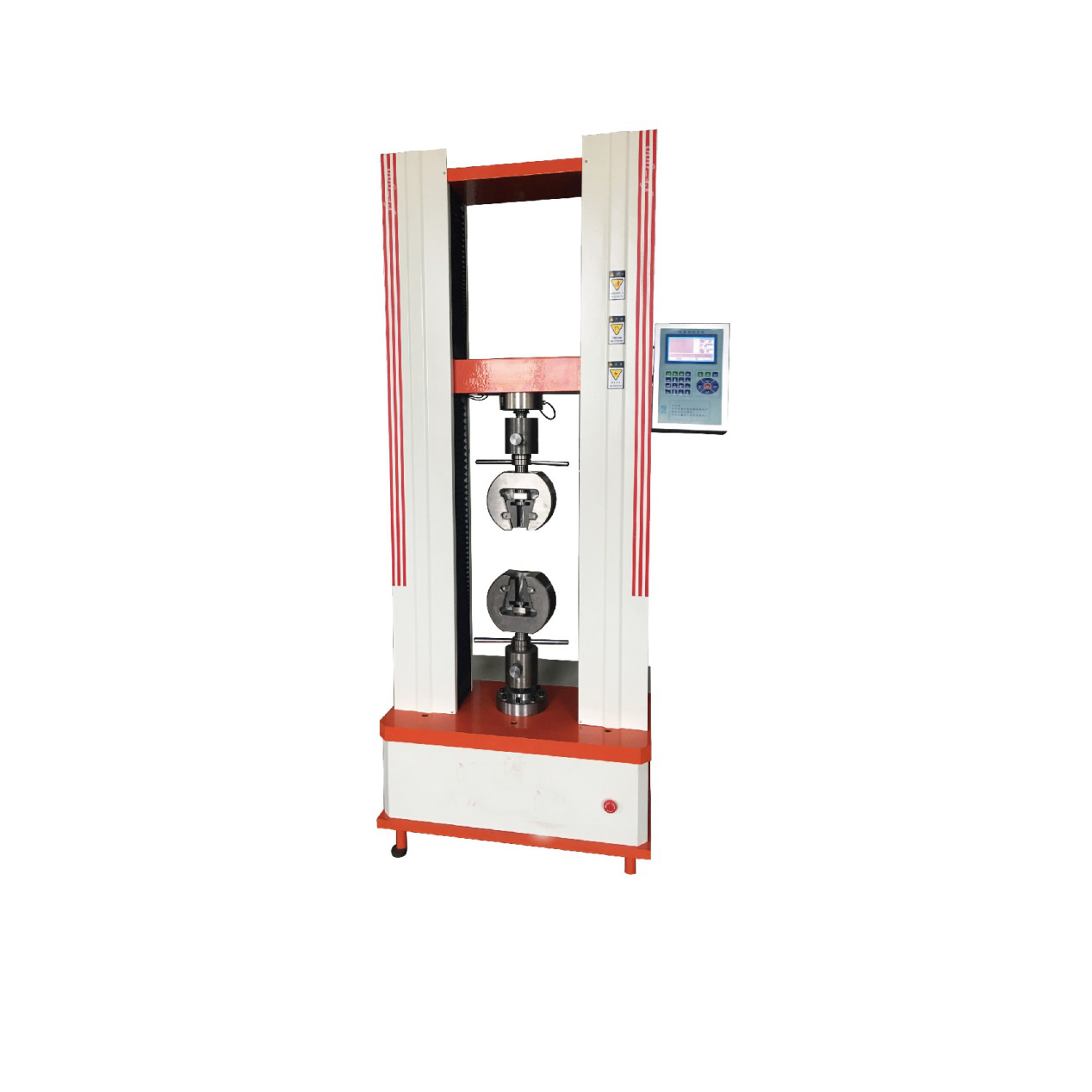
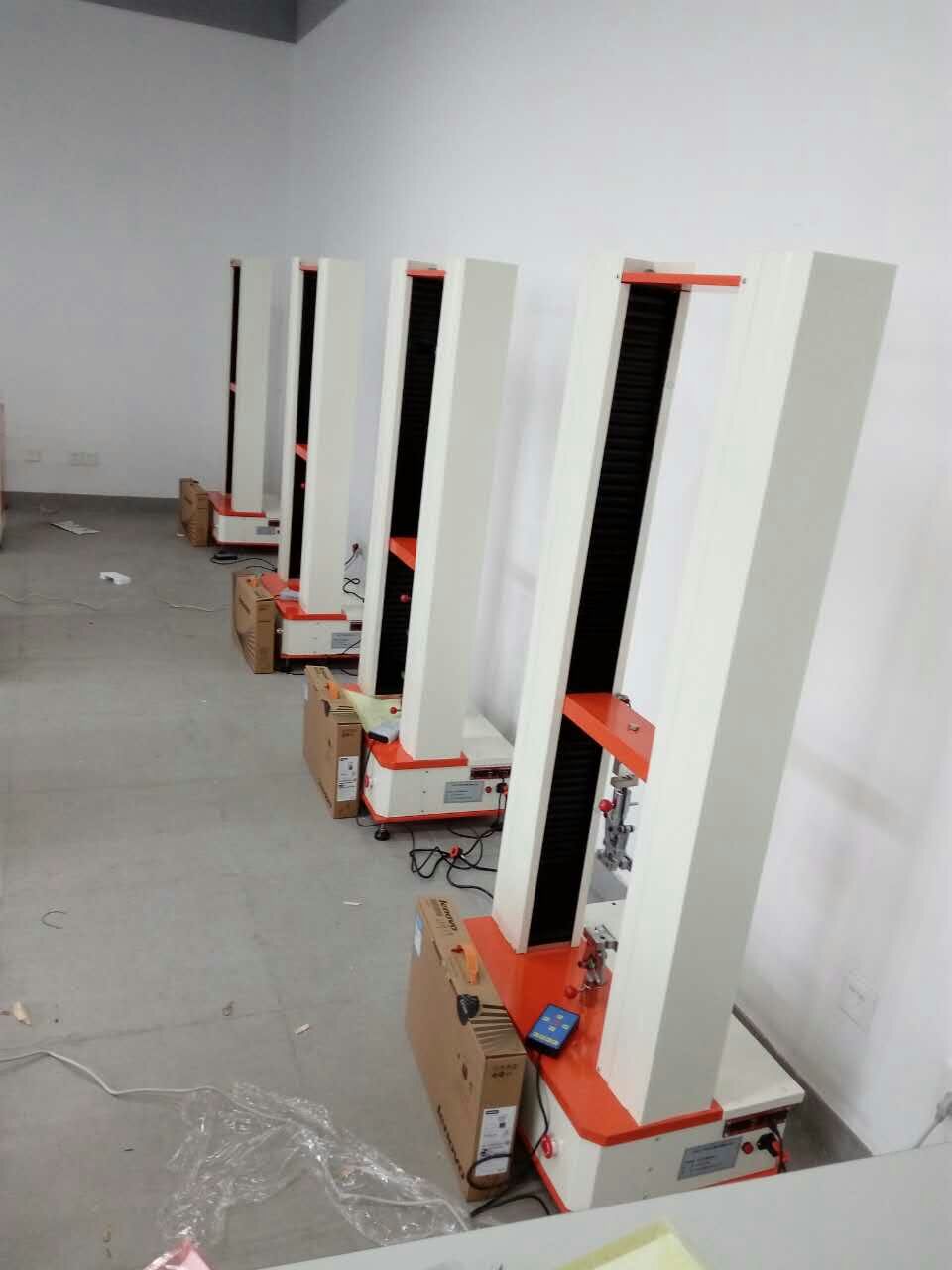
2: Blue screen on the instrument panel after power on
Solution: 1: Power on again
2: If it doesn't work, try powering it on in a place without interference
3: Contact the manufacturer to replace the LCD screen
3: The crossbeam does not move
Solution: 1: Check if the data cable has a connection number
2: Check if there is overload and if the sensor is damaged
3: Is there a limit, move the magnet
4: Inaccurate instrument
Solution: 1: Is the sensor damaged
2: Adjusted the calibration coefficient
3: Is it an annual inspection
Environment and working conditions
The testing machine should be able to operate normally under the following conditions:
a) Within the temperature range of 10 ℃ to 35 ℃ at room temperature;
b) Relative humidity not exceeding 80%;
c) In an environment without vibration, corrosive media, and strong electromagnetic interference;
d) The variation of power supply voltage is within ? 10% of the rated voltage;
e) Install correctly on a stable foundation, with a levelness of 0.2/1000.
5.1.1 General Requirements
5.1.1.1 The testing machine frame should have sufficient rigidity and testing space, and should be able to easily conduct various tests. It should also be convenient for the loading and unloading of specimens, specimen fixtures, and testing machine accessories, as well as the installation and use of standard force measuring instruments.
5.1.1.2 The testing machine should be stable during the application and removal of force, without any impact or vibration phenomena.
5.1.2 Tensile test clamping device
5.3.2.1 During the process of applying force and at any position, the center lines of the upper and lower clamps and specimen jaws of the specimen clamping device for tensile testing should be coaxial with the force axis of the testing machine, and their coaxiality should be:
——For testing machines with a maximum capacity of no more than 5kN, the diameter should not exceed 2mm/500mm;
——For testing machines with a maximum capacity greater than 5kN, they should comply with the provisions of Table 4.
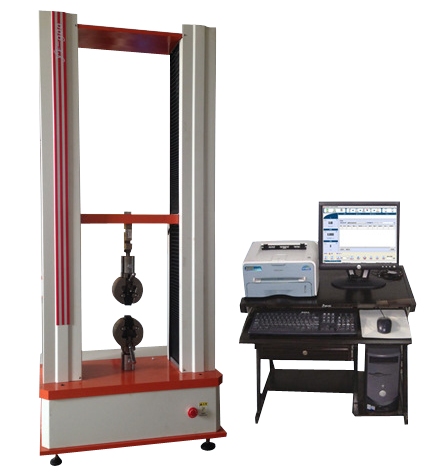
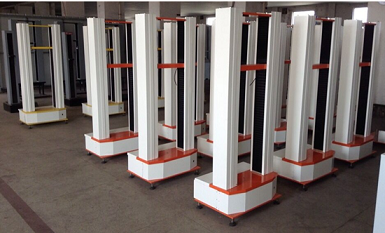
Table 4 Maximum allowable coaxiality values
Maximum allowable coaxiality of testing machine level
%
0.5 12
1 15
5.3.2.2 The clamp should ensure reliable clamping, and the specimen should be uniformly clamped along the entire length of the clamping part, and should be able to apply the maximum force of the testing machine to the specimen. There should be no relative slip between the specimen and the clamp under applied force or during the testing process.
5.3.2.3 After unloading the force or conducting a tensile test on the specimen, all parts of the clamp should be undamaged.
5.3.2.4 The jaws should have interchangeability.
Special testing items:
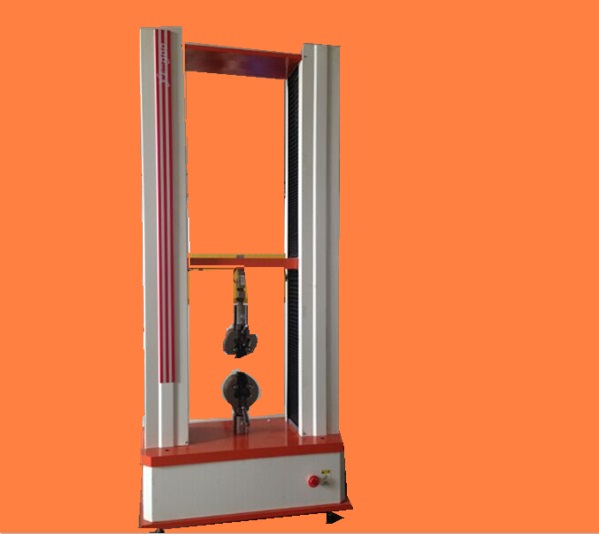
A. The elastic coefficient, also known as the Young's modulus of elasticity, is defined as the ratio of the normal stress component to the normal strain in the same phase. To determine the coefficient of material rigidity, the higher the value, the stronger the material.
B. Proportional limit: The load can maintain a proportional relationship with elongation within a certain range, and its maximum stress is the specific limit.
C. Elastic limit: The maximum stress that a material can withstand without permanent deformation.
D. Elastic deformation: After removing the load, the deformation of the material completely disappears.
E. Permanent deformation: After removing the load, the material still retains deformation.
F. Yield point: When a material is stretched, the deformation increases while the stress remains constant, and this point is called the yield point. The yield point is divided into upper and lower yield points, and generally the upper yield point is taken as the yield point. Yield: When the load exceeds the proportional limit and elongation is no longer proportional, the load will suddenly drop, and then fluctuate up and down over a period of time, causing significant changes in elongation. This phenomenon is called yield.
G. Yield strength: The quotient obtained by dividing the load at which the permanent elongation reaches a specified value during stretching by the original cross-sectional area of the parallel part.
H. Spring K value: the ratio of the force component in phase with the deformation to the deformation.
I. Effective elasticity and hysteresis loss:
On a tensile testing machine, when the specimen is stretched at a certain speed to a certain elongation or to a specified load, the percentage of the recovered work during shrinkage and the consumed work during stretching is measured as the effective elasticity; The percentage of the energy lost during the elongation and contraction of a sample compared to the work consumed during elongation is called hysteresis loss.
Scope of application:
Widely used in tensile, compressive, bending, tearing, 90 ? peeling, 180 ? peeling, shear, adhesion, pull-out force, elongation at extension and other tests for metal and non-metal materials and component products such as wires and cables, textiles, waterproof materials, non-woven fabrics, seat belts, rubber, plastic, film, steel wire ropes, steel bars, metal wires, metal foils, metal sheets and metal rods, as well as special mechanical performance tests for some products.
關(guān)于儀器質(zhì)保:1、北廣儀器保證提供的設(shè)備為需方指定的全新設(shè)備,其各項(xiàng)技術(shù)指標(biāo)均符合相關(guān)的產(chǎn)品技術(shù)要求。2、設(shè)備經(jīng)客戶驗(yàn)收合格后,開始計(jì)算保修期,設(shè)備免費(fèi)保修期為壹年,設(shè)備在質(zhì)量保質(zhì)期內(nèi),產(chǎn)品在非人為損壞的情況下,由北廣儀器負(fù)責(zé)全保。北廣儀器的客服在得到通知后24小時(shí)內(nèi)響應(yīng),安排約定維修細(xì)節(jié)。3、質(zhì)保期后,我們免費(fèi)為您維修維護(hù)設(shè)備,除大型設(shè)備外所有設(shè)備一律返廠維修,經(jīng)檢驗(yàn)后,電話告知客戶問(wèn)題所在及解決方式,經(jīng)客戶同意后進(jìn)行維修,維修后發(fā)回客戶,對(duì)于損壞及更換的零部件我們只收取成本費(fèi);如客戶不認(rèn)同我們的檢驗(yàn)結(jié)果,雙方另協(xié)商維修細(xì)節(jié)。
安全注意事項(xiàng):開機(jī)之前,敬請(qǐng)仔細(xì)閱讀本使用指南,以防止出現(xiàn)對(duì)操作人員的意外傷害或?qū)x器的損壞等的事件。操作前,請(qǐng)閱讀“安裝與設(shè)置”,保證對(duì)儀器各部件的正確安裝與連接。在第一次操作前,務(wù)必請(qǐng)有操作經(jīng)驗(yàn)的人員進(jìn)行指導(dǎo),防止誤操作造成意外事件的發(fā)生。電擊危險(xiǎn): 確保在安裝或維修該儀器之前使所有導(dǎo)線斷電,防止在帶電情況下,對(duì)人員或設(shè)備造成傷害。
北廣精儀公司電性能及橡膠塑料相關(guān)產(chǎn)品:
BWN拉力材料試驗(yàn)機(jī)(符合國(guó)標(biāo)GB/T1172-1999、GB/T2975-1998、GB/T10632-1989)
BDJC-10KV-200KV電壓擊穿試驗(yàn)儀(符合國(guó)標(biāo)GB1408-2006、GB/T1695-2005、GB/T3333、HG/T 3330、GB12656、ASTM D149)
BEST-121體積表面電阻率測(cè)定儀(符合國(guó)標(biāo)GB/T 1410、2439、10581、1692、12703.4、10064、ASTM D257-99)
BQYH-96塑料球壓痕硬度計(jì)(符合國(guó)標(biāo)GB/T3398-2008)
BEST-19導(dǎo)體材料電阻率測(cè)試儀
M-200橡膠塑料滑動(dòng)摩擦試驗(yàn)機(jī)(國(guó)標(biāo),非國(guó)標(biāo),可定制)
GDAT-A介電常數(shù)介質(zhì)損耗測(cè)試儀(可測(cè)試固體液體
BQS-37A高頻介電常數(shù)介質(zhì)損耗測(cè)試儀
BDH-20KV絕緣材料耐電弧性能試驗(yàn)儀/高電壓小電流測(cè)試儀
BWK-300A液顯熱變形維卡軟化點(diǎn)溫度測(cè)定儀
BQYH-96塑料球壓痕硬度計(jì)
BRT-400Z熔體流動(dòng)速率測(cè)定儀/熔融指數(shù)儀
BMD-A計(jì)算機(jī)控制馬丁耐
HMYX-2000海綿泡沫壓陷硬度測(cè)定儀
HMLQ-500海綿泡沫落球回彈儀
HMPL-2000海綿泡沫疲勞沖擊測(cè)定儀
HMLS-1000海綿拉伸強(qiáng)度試驗(yàn)機(jī)
HMYS-200海綿壓縮永久變形試驗(yàn)機(jī)
HMMD-A海綿密度測(cè)定儀
JF-3氧指數(shù)測(cè)定儀
XCY-III低溫脆性試驗(yàn)機(jī)
BLD-600V漏電起痕試驗(yàn)儀
BLD-6000V高壓漏電起痕試驗(yàn)儀
BLC-2000落球沖擊試驗(yàn)機(jī)
BLB-30管材落鏢沖擊試驗(yàn)機(jī)
BCM-03擺錘薄膜沖擊試驗(yàn)機(jī)
CZF-5水平垂直燃燒試驗(yàn)儀
BZR-A汽車內(nèi)飾材料阻燃性能試驗(yàn)機(jī)
BYL-01啞鈴制樣機(jī)
BJ-50簡(jiǎn)支梁沖擊試驗(yàn)機(jī)
BX-50懸臂梁沖擊試驗(yàn)機(jī)
BM-201門尼粘度試驗(yàn)機(jī)
BL-200無(wú)轉(zhuǎn)子硫化儀
cp-s沖片機(jī)手動(dòng)
cp-q氣動(dòng)沖片機(jī)
業(yè)務(wù)咨詢:932174181 媒體合作:2279387437 24小時(shí)服務(wù)熱線:15136468001 盤古機(jī)械網(wǎng) - 全面、科學(xué)的機(jī)械行業(yè)免費(fèi)發(fā)布信息網(wǎng)站 Copyright 2017 PGJXO.COM 豫ICP備12019803號(hào)